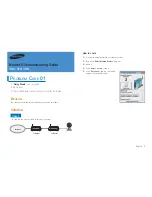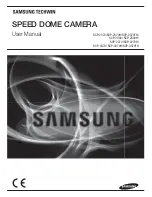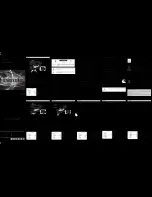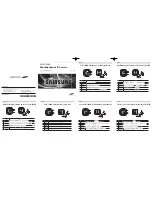
Alarm area
[Area select]
Click [
] of “Area No.” and select an area number (1-4) from the pull-down menu. An asterisk (*) next to the
area number indicates that the area has already been learned. When “On” (when there is an alarm area
intrusion) is selected with “Auto track alarm”, the alarm area will become active.
[Area No. notification]
When “Panasonic alarm protocol notification >>” is clicked, the [Notification] tab of the “Alarm” page will be
displayed. (
Note
•
The alarm area cannot be configured separately for each preset position. The configured alarm area
is active for all preset areas.
Detection mask area
[Area select]
Click [
] of “Area No.” and select an area number (1-4) from the pull-down menu. An asterisk (*) next to the
area number indicates that the area has already been learned. By setting a mask for shooting areas (the screen)
that you do not want to detect movement in, false detections can be reduced.
Note
•
By setting a mask for shooting areas (the screen) that have objects that can cause false detections
such as swaying trees, roads (where cars pass through), or level surfaces (areas that cause light
reflection), false detections can be reduced.
•
Mask areas cannot be configured separately for each preset position. The specified area is active for
all the preset positions.
IMPORTANT
•
During auto tracking, if the tracking target enters the masked area, tracking will continue unchanged.
Note that the mask area will not be active in this situation.
[Zoom] buttons, [Focus] buttons, [Brightness] buttons, Control pad/buttons and [Go] button
Refer to page 9 for descriptions of how to operate these buttons/pad.
[Close] button
Click this button to close the “Auto track” setup menu.
IMPORTANT
•
In the following situations, targets may not be able to be tracked, or false detections may occur.
–
when there is little contrast between the subject and the background
–
when the dome is dirty or wet
–
when there are large changes to the lighting intensity
–
when there are many moving objects other than the subject
–
when there is a change to the axis of the camera’s lens
–
when the subject moves directly underneath the camera
–
when there is harsh flickering
–
when there are reflections from light entering the dome due to reflections from a window or road,
or from a backlight
–
when the target is hidden behind a utility pole or other objects
–
when the subject passes by other moving objects
Operating Instructions
121
11 Configure the settings relating to images and audio [Image/Audio]
















































